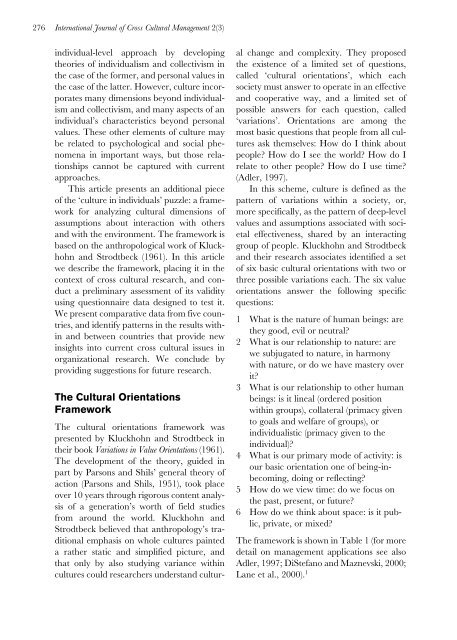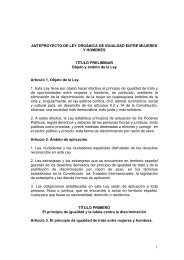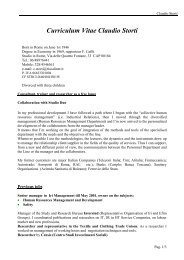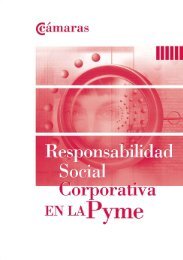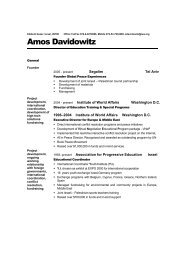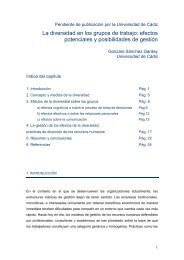Cultural dimensions - IMD
Cultural dimensions - IMD
Cultural dimensions - IMD
You also want an ePaper? Increase the reach of your titles
YUMPU automatically turns print PDFs into web optimized ePapers that Google loves.
276International Journal of Cross <strong>Cultural</strong> Management 2(3)individual-level approach by developingtheories of individualism and collectivism inthe case of the former, and personal values inthe case of the latter. However, culture incorporatesmany <strong>dimensions</strong> beyond individualismand collectivism, and many aspects of anindividual’s characteristics beyond personalvalues. These other elements of culture maybe related to psychological and social phenomenain important ways, but those relationshipscannot be captured with currentapproaches.This article presents an additional pieceof the ‘culture in individuals’ puzzle: a frameworkfor analyzing cultural <strong>dimensions</strong> ofassumptions about interaction with othersand with the environment. The framework isbased on the anthropological work of Kluckhohnand Strodtbeck (1961). In this articlewe describe the framework, placing it in thecontext of cross cultural research, and conducta preliminary assessment of its validityusing questionnaire data designed to test it.We present comparative data from five countries,and identify patterns in the results withinand between countries that provide newinsights into current cross cultural issues inorganizational research. We conclude byproviding suggestions for future research.The <strong>Cultural</strong> OrientationsFrameworkThe cultural orientations framework waspresented by Kluckhohn and Strodtbeck intheir book Variations in Value Orientations (1961).The development of the theory, guided inpart by Parsons and Shils’ general theory ofaction (Parsons and Shils, 1951), took placeover 10 years through rigorous content analysisof a generation’s worth of field studiesfrom around the world. Kluckhohn andStrodtbeck believed that anthropology’s traditionalemphasis on whole cultures painteda rather static and simplified picture, andthat only by also studying variance withincultures could researchers understand culturalchange and complexity. They proposedthe existence of a limited set of questions,called ‘cultural orientations’, which eachsociety must answer to operate in an effectiveand cooperative way, and a limited set ofpossible answers for each question, called‘variations’. Orientations are among themost basic questions that people from all culturesask themselves: How do I think aboutpeople? How do I see the world? How do Irelate to other people? How do I use time?(Adler, 1997).In this scheme, culture is defined as thepattern of variations within a society, or,more specifically, as the pattern of deep-levelvalues and assumptions associated with societaleffectiveness, shared by an interactinggroup of people. Kluckhohn and Strodtbeckand their research associates identified a setof six basic cultural orientations with two orthree possible variations each. The six valueorientations answer the following specificquestions:1 What is the nature of human beings: arethey good, evil or neutral?2 What is our relationship to nature: arewe subjugated to nature, in harmonywith nature, or do we have mastery overit?3 What is our relationship to other humanbeings: is it lineal (ordered positionwithin groups), collateral (primacy givento goals and welfare of groups), orindividualistic (primacy given to theindividual)?4 What is our primary mode of activity: isour basic orientation one of being-inbecoming,doing or reflecting?5 How do we view time: do we focus onthe past, present, or future?6 How do we think about space: is it public,private, or mixed?The framework is shown in Table 1 (for moredetail on management applications see alsoAdler, 1997; DiStefano and Maznevski, 2000;Lane et al., 2000). 1


